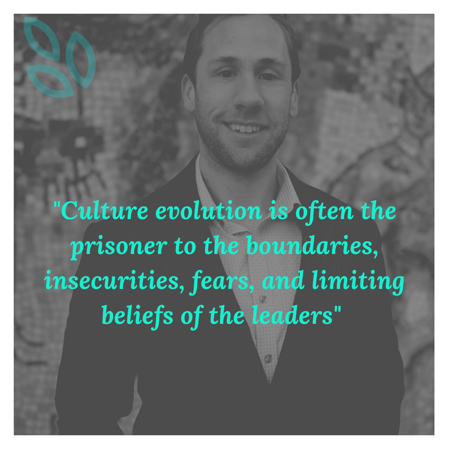"Culture evolution and innovation is often the prisoner to the boundaries, insecurities, fears, and limiting beliefs of the leaders"

I was connecting with a Chief People Officer over a coaching call this last week and triggered a quote I often like to say in the early stages of a partnership. Especially when we are looking to truly change the way we operate and do things within the culture.
"Culture evolution and innovation is often the prisoner to the boundaries, insecurities, fears, and limiting beliefs of the leaders"
This is often a hard statement to say out loud in front of company leaders. Mainly because it can feel like a direct shot at the leaders themselves.
But it is important to understand and extremely important to your culture strategy.
In the early days of cultural evolution, many of the practices you choose will feel deeply countercultural. You will experience people questioning your choices and some will even tell you that your choices are foolish.
The key to these situations is to take these dialogues and arguments to a deeper level and discuss the hidden assumptions underneath the practices.
Especially if you are a hired people officer and have to gain buy-in from the leaders who are part of the decision-making process.
For example, leaders may see certain innovation practices as foolish or counterproductive, and people end up arguing for or against a certain practice - but when you take it to a deeper level, you can start to discuss the often hidden assumptions underneath the practices. Most of the time you will find a deeper fear for what might happen if they try something new.
If you start to have a base understanding of these belief systems, you can then start re-engineering a new narrative.
Here is an example activity - I encourage you to practice this with your team and not alone!
Step 1 - uncover the unspoken assumptions behind something such as the traditional hierarchical organizational model.
Why do we operate this way? Why is it necessary to have a hierarchy?
Ask some reflective questions and figure out what the assumptions are.
You might hear things like, well workers are lazy and untrustworthy so we need systems to keep them accountable. Senior people have all the answers, so that's why they are on top. Employees can't handle the difficult news about the company so we withhold certain levels of employees from it. and so on...
Many people find this exercise eye-opening.
Once you understand some of the sad assumptions within your organization, you can start to energize and define a more positive set of assumptions.
Whatever alternative set of assumptions you define will serve two functions for you:
1. It will make it easier for you and your colleagues to explain why you've chosen to operate using practices that defy conventional practices.
2. The assumptions can serve as touchstones for every new practice or process you consider introducing.
If you are starting a culture change initiative or struggling to gain traction on one, try uncovering the assumptions held on the focus area and then move forward from there!
Need a tool to help uncover assumptions? Read our blog exercise on the "Ladder of Inference."
Want to discover what the current culture is and the assumptions within the company?
Engage with us for a "Culture Mapping" analysis! 




